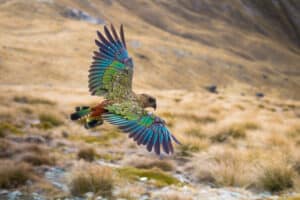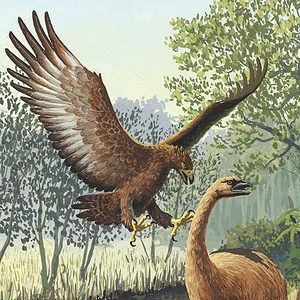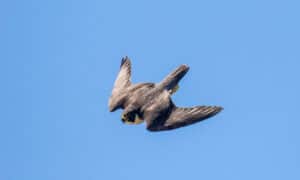The bird world is full of amazing beaks with a wonderful diversity of not just form and function, but also color! Check out this collection of some of nature’s most beautiful multicolor bird beaks.
1. Bateleur (Terathopius ecaudatus)
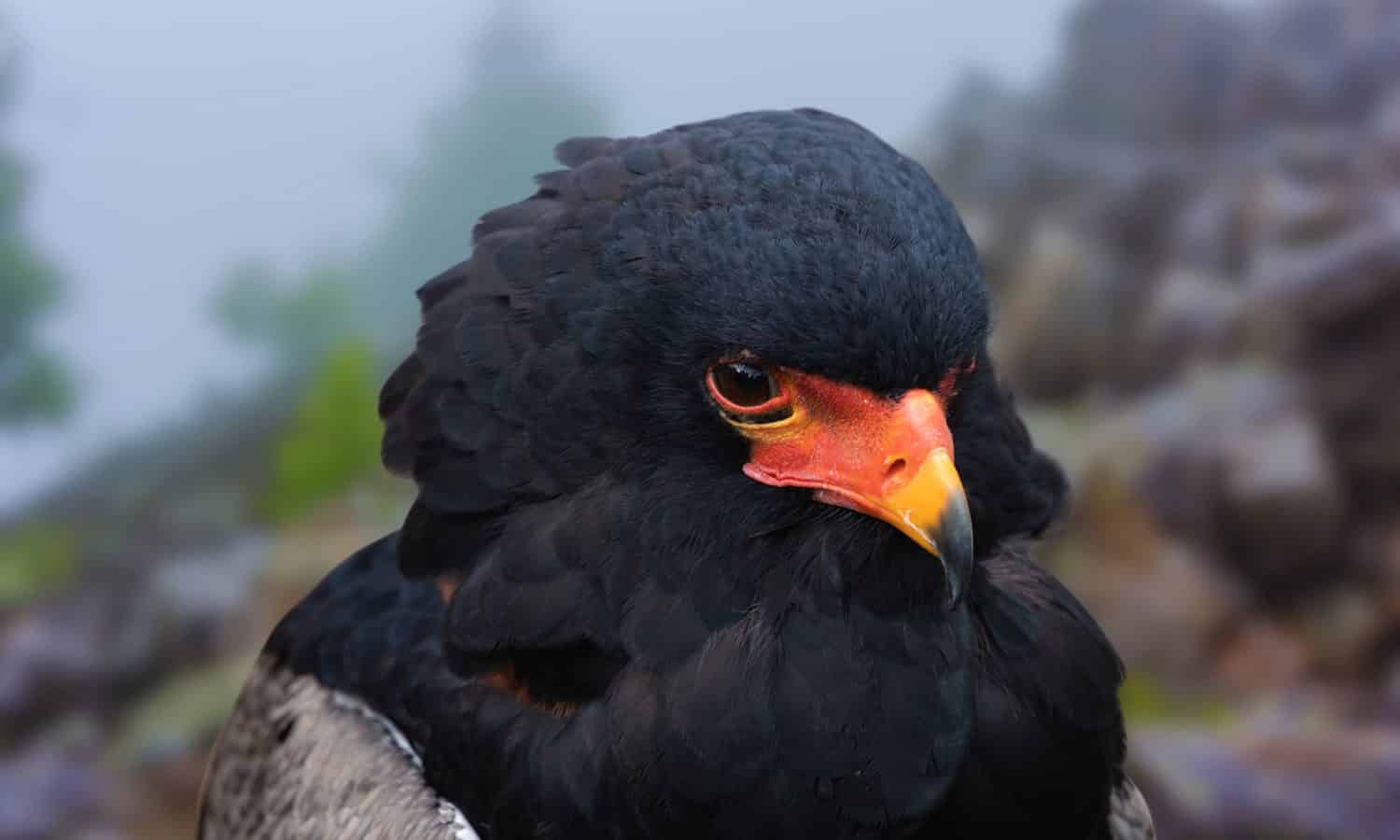
Bateleurs are eagles native to Africa and southwestern Arabia.
©Prabodha D Herath/Shutterstock.com
The bateleur’s tricolored beak is black at the tip, golden yellow in the middle, and scarlet at the base. The base matches the large scarlet cere above it.
2. Black-and-Red Broadbill (Cymbirhynchus macrorhynchos)
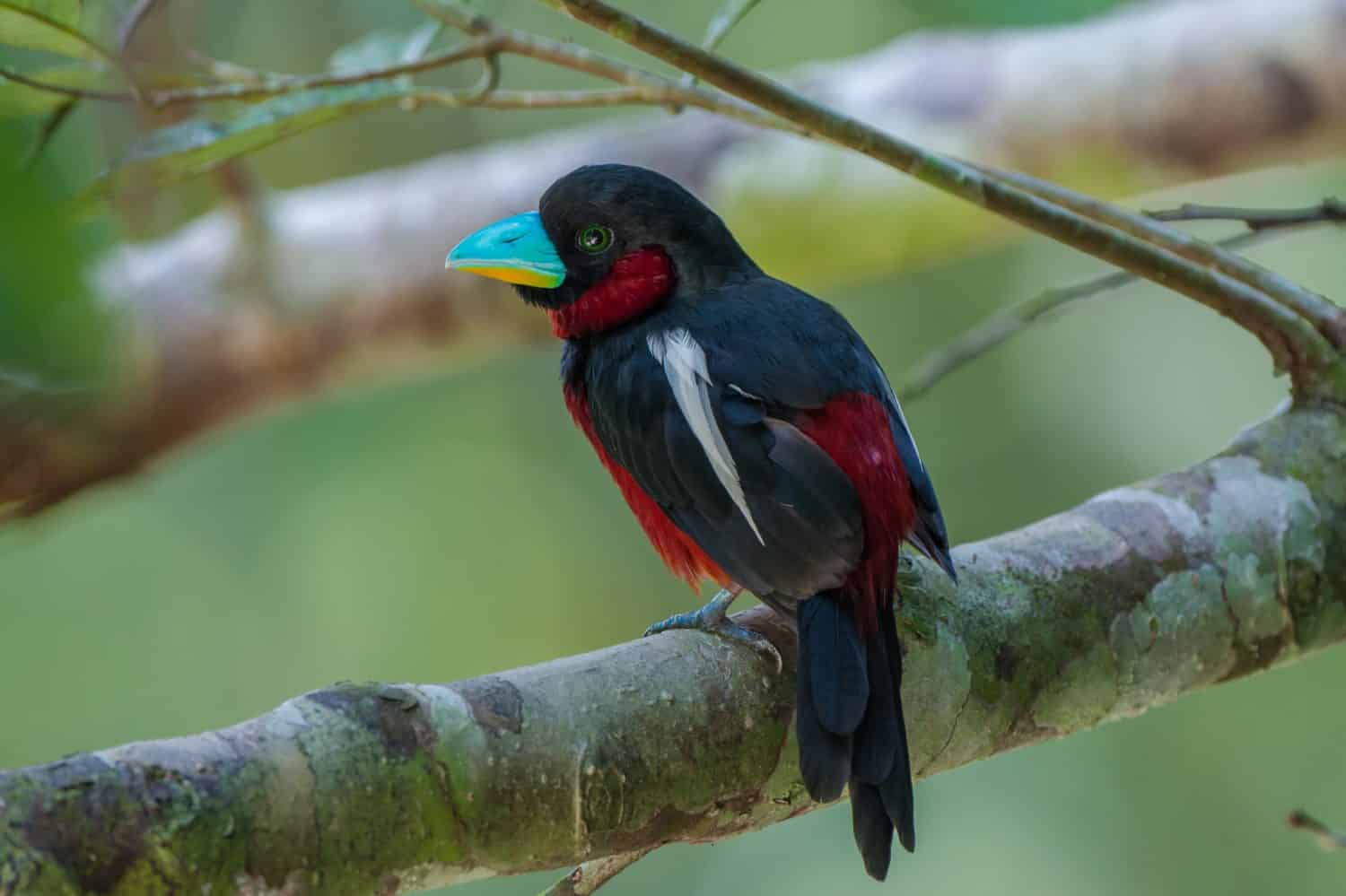
Black-and-red broadbills are native to Southeast Asia.
©Mohd Askwhat/Shutterstock.com
While there are several species of blue-beaked broadbills, the black-and-red broadbill has the most colorful bill of them all. The vivid turquoise beak is splashed with some orange-yellow and just a touch of green.
3. Capped Heron (Pilherodius pileatus)

Capped herons are native to northern South America.
The capped heron’s turquoise facial skin leads into a long pointed beak tinted with pretty shades of blue, purple, and gray.
4. Eurasian Spoonbill (Platalea leucorodia)
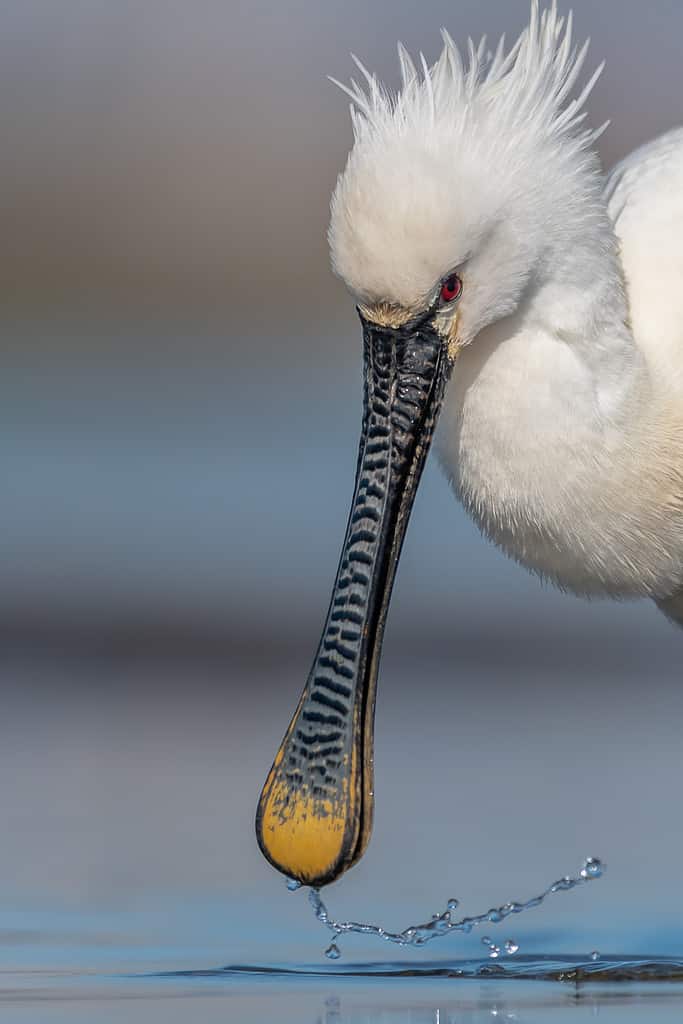
Eurasian spoonbills have a patchy but wide distribution across Afro-Eurasia.
©Nuno Candido, CC BY-SA 4.0, via Wikimedia Commons – License
All spoonbills boast delightful ladle-shaped beaks, of course. However, the Eurasian spoonbill jazzes things up with a black and slate zebra patterned beak and a tip that looks like it was dipped in a can of golden yellow paint!
5. Flamingos (Phoenicopteridae)
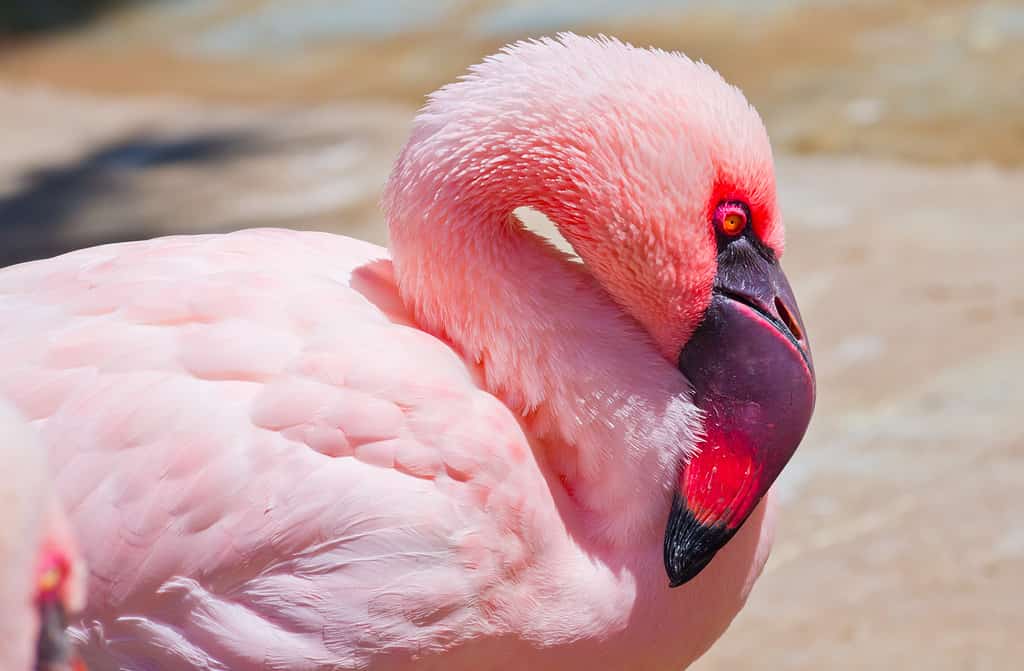
Flamingos are native to parts of both the Americas and Afro-Eurasia.
©Antoine Taveneaux, CC BY-SA 3.0, via Wikimedia Commons – License
Like a few other bird taxa that follow, all flamingos make this list collectively for their famously fabulous multicolored beaks. Bill colors found in this family include various shades of pink, yellow, peach, white, and black. Representing the family of six species here is the unfairly named lesser flamingo (Phoeniconaias minor). This underappreciated species features a beak that can display unique rich hues of deep purple, in addition to highlights of scarlet and pink and a black tip.
6. Hornbills (Bucerotidae)
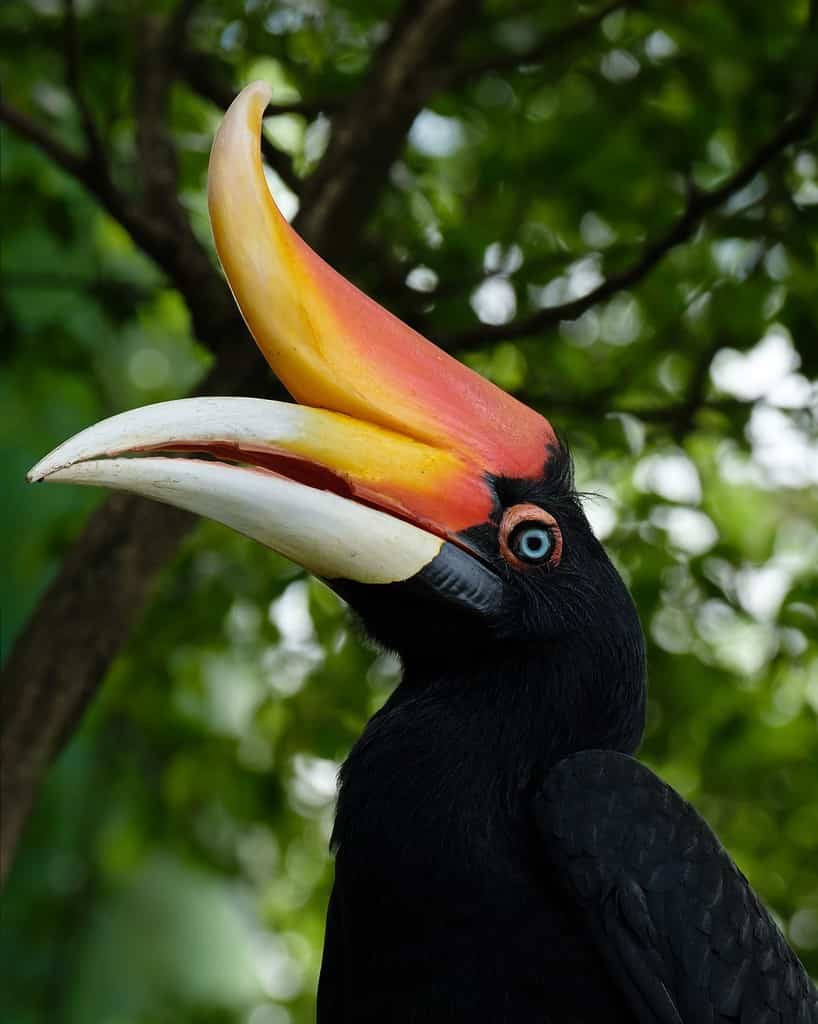
Hornbills are native to areas of Africa, Asia, and Melanesia;
rhinoceros
hornbills are native to Southeast Asia.
©nexusby/Shutterstock.com
Once again, an entire family of birds makes this list, as incredible multicolored beaks are a common feature of hornbills. Unlike toucans, however, for which they are sometimes confused, hornbills accessorize their beaks with matching casques on top! Furthermore, hornbill beaks and casques get their bright highlights not from pigments in the beak itself, but rather from preening oils. Representing the family of 60 species here is the rhinoceros hornbill (Buceros rhinoceros), whose white and black bill is cosmetically colored with shades of red, orange, and yellow.
7. King Eider (Somateria spectabilis)
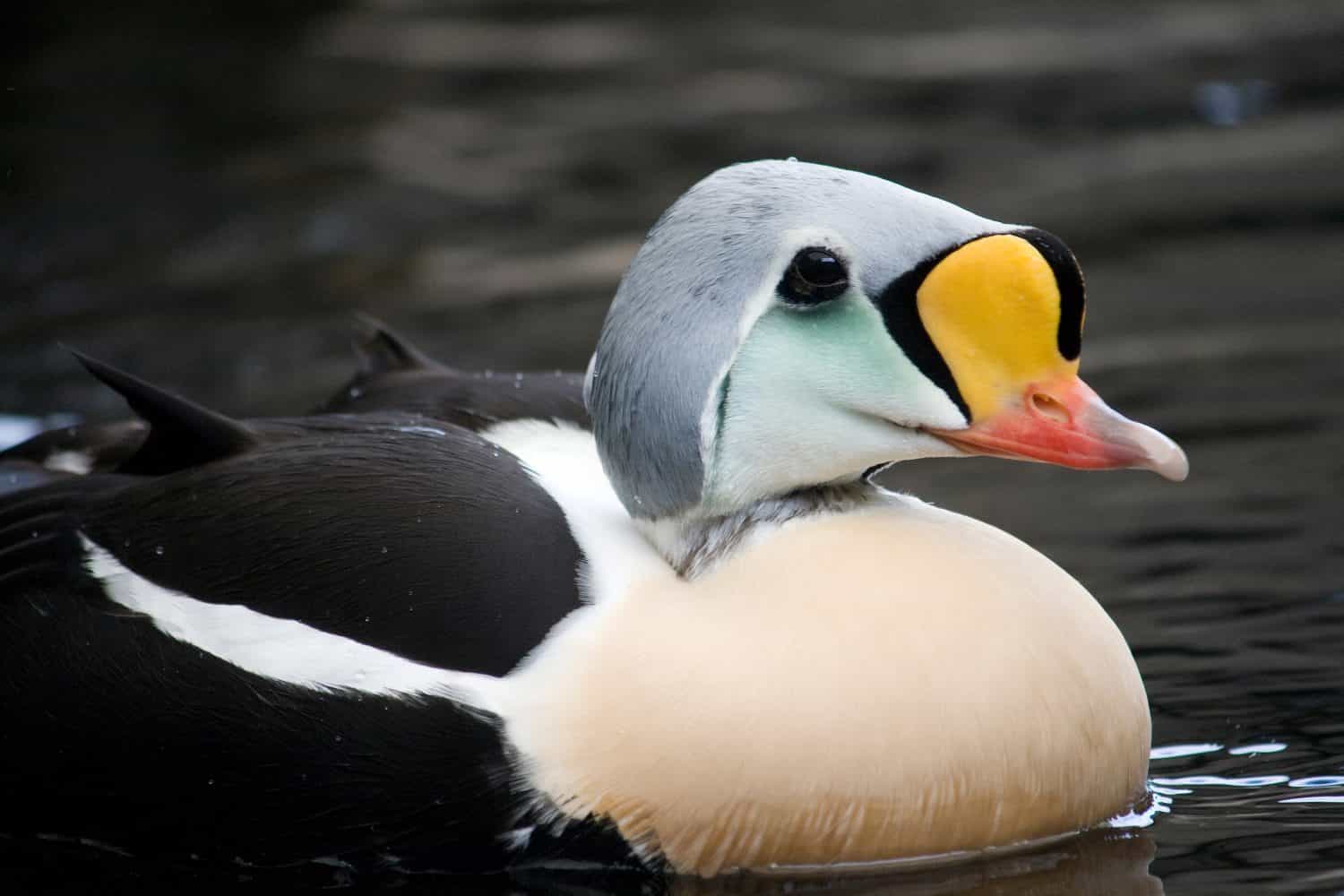
The king eider breeds across the Arctic and overwinters in sub-Arctic waters.
©Nikki Gensert/Shutterstock.com
The male king eider sports a scarlet bill that may simply be white-tipped or may transition to a purplish band with a paler tip. Either way, a bright yellow frontal lobe outlined in black tops it off.
8. Mute Swan (Cygnus olor)
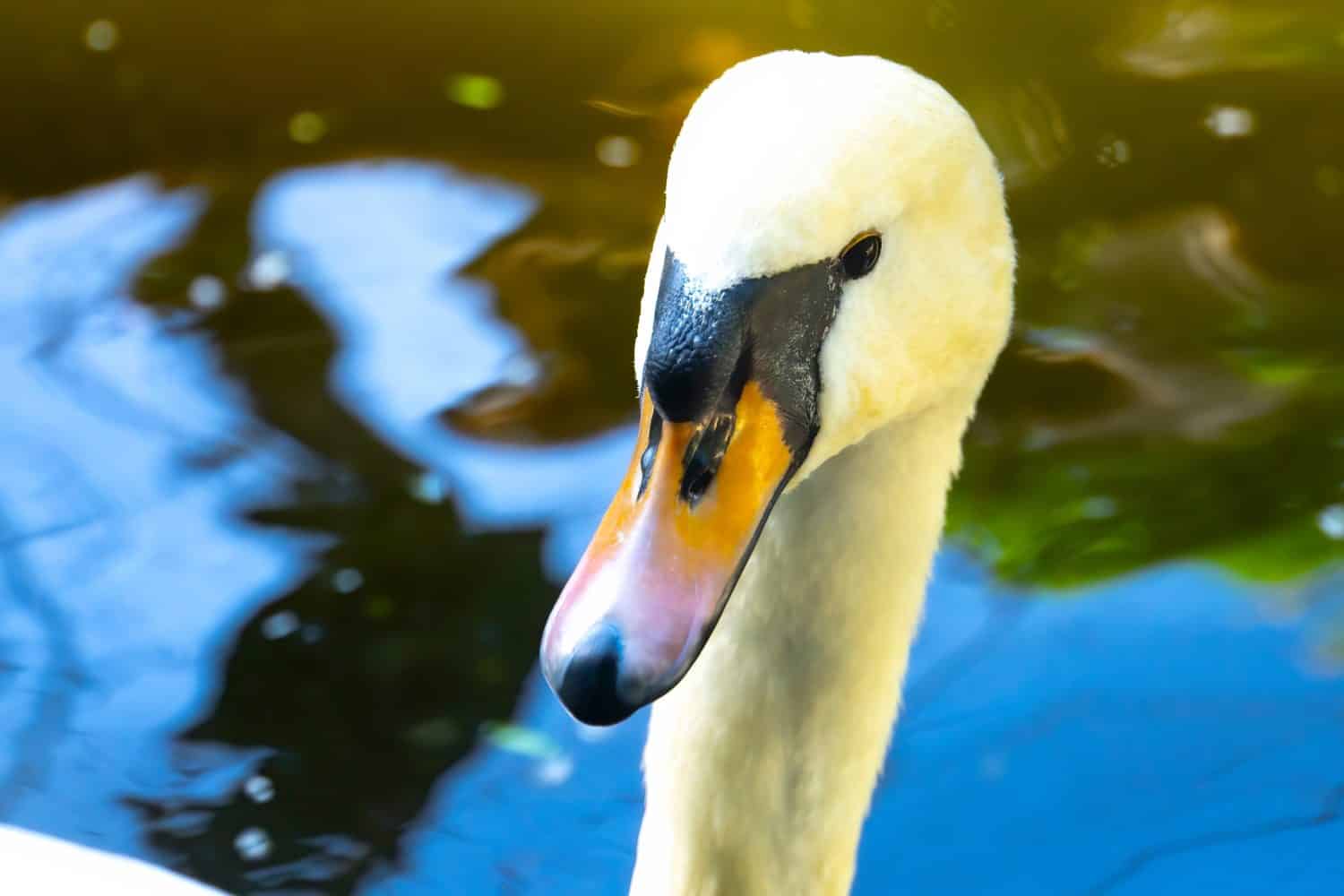
Mute swans are native to Eurasia.
©fatamorgana-999/Shutterstock.com
All swans have lovely beaks, but the mute swan has the best of the bunch. Its porcelain-like bill is glazed with a combination of reddish-orange and dull pink ringed with bold black.
9. Pallas’s Gull (Ichthyaetus ichthyaetus)

Pallas’s gulls, also known as great black-headed gulls, are native to parts of Afro-Eurasia.
©Dmitry Mikhirev [cropped[ / CC BY-SA 4.0 – License
The Pallas’s gull has a multicolored beak banded in shades of red, orange, yellow, and black.
10. Puffins (Fratercula spp.)
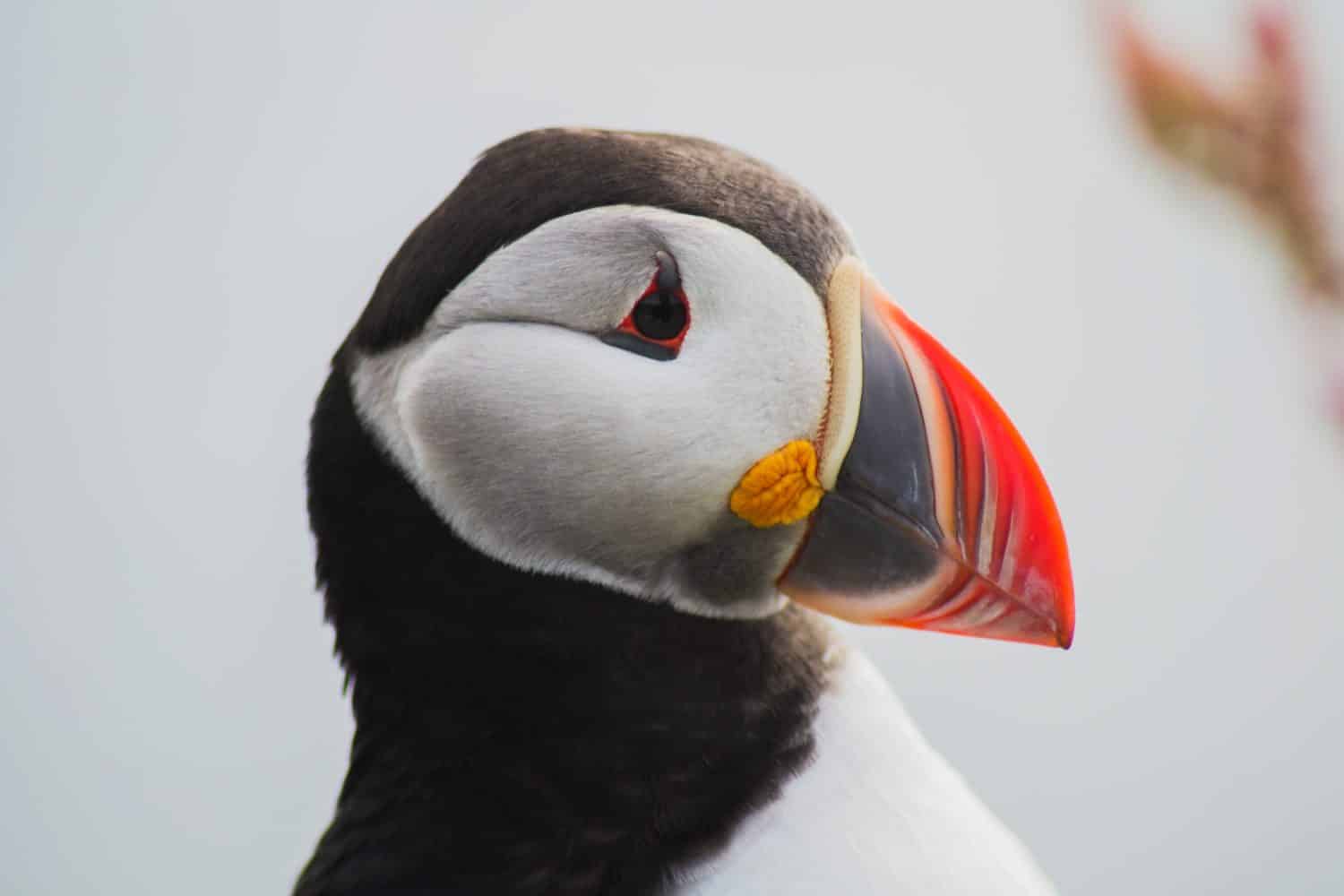
Puffins are native to the North Atlantic and North Pacific Oceans.
©Dajahof/Shutterstock.com
There are three species of puffins, and they all have large triangular beaks that become brightly colored and decorated with fleshy gape rosettes during the breeding season. Each species has its own unique take on the basic red-orange-yellow bill color scheme. Representing the family here is the Atlantic puffin (Fratercula arctica), whose breeding season beak is painted coral and blue-gray with highlights of paler blue-gray and yellow, topped off with a bright yellow rosette. Meanwhile, the tufted puffin (Fratercula cirrhata) displays a mostly orange bill with dull green plates and a red rosette, while the horned puffin (Fratercula corniculata) sports a beak that is yellow and red with a yellow or orange rosette.
11. Purple Gallinule (Porphyrio martinicus)
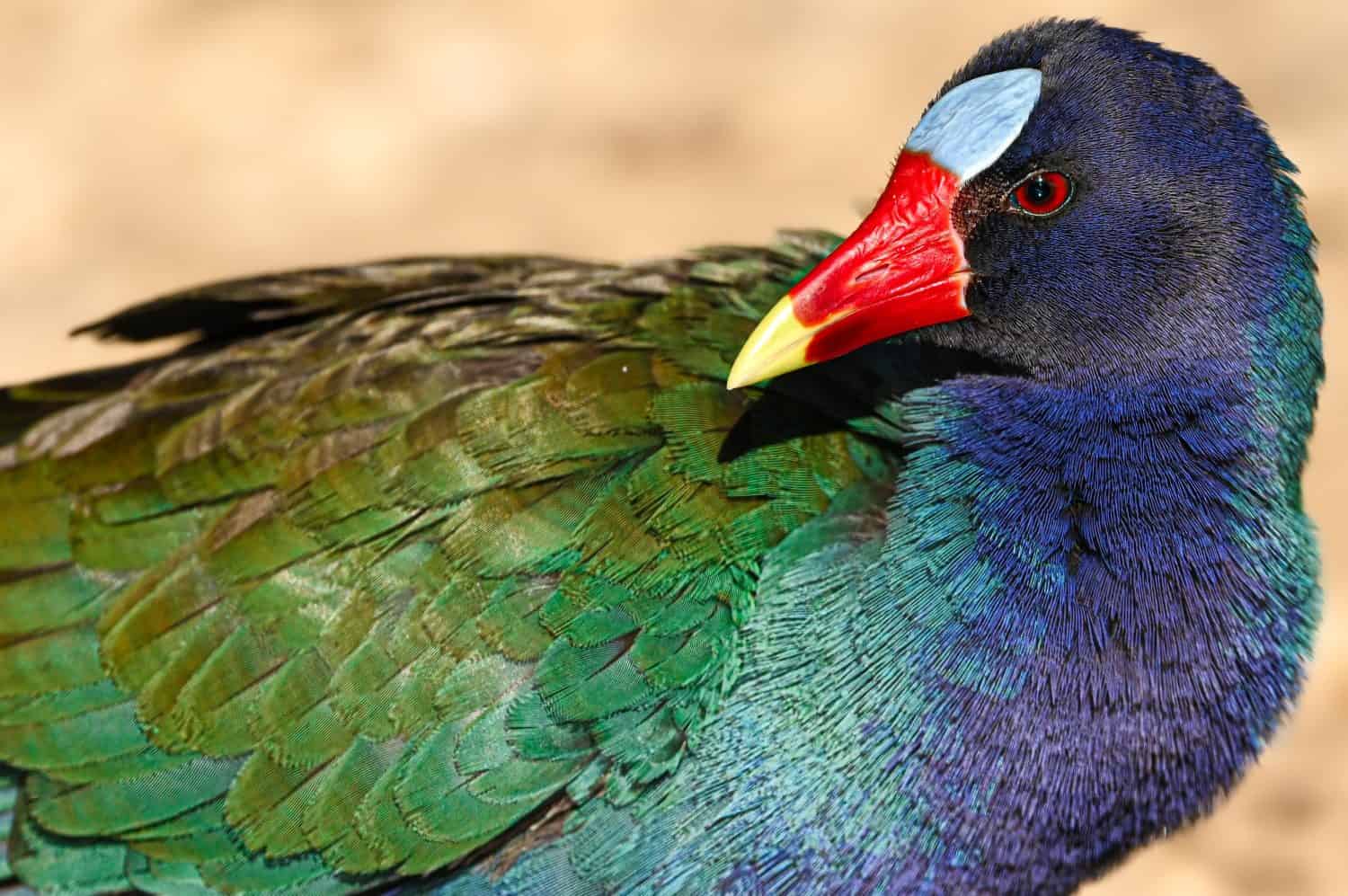
Purple gallinules are resident species of the Neotropical Americas but also visit the Southeastern U.S. during the breeding season.
©Nathanial O’Connell/Shutterstock.com
The purple gallinule accessorizes its colorful plumage with a brightly colored beak. It has a yellow tip and a red base topped off with a powder-blue frontal plate.
12. Red-Footed Booby (Sula sula)
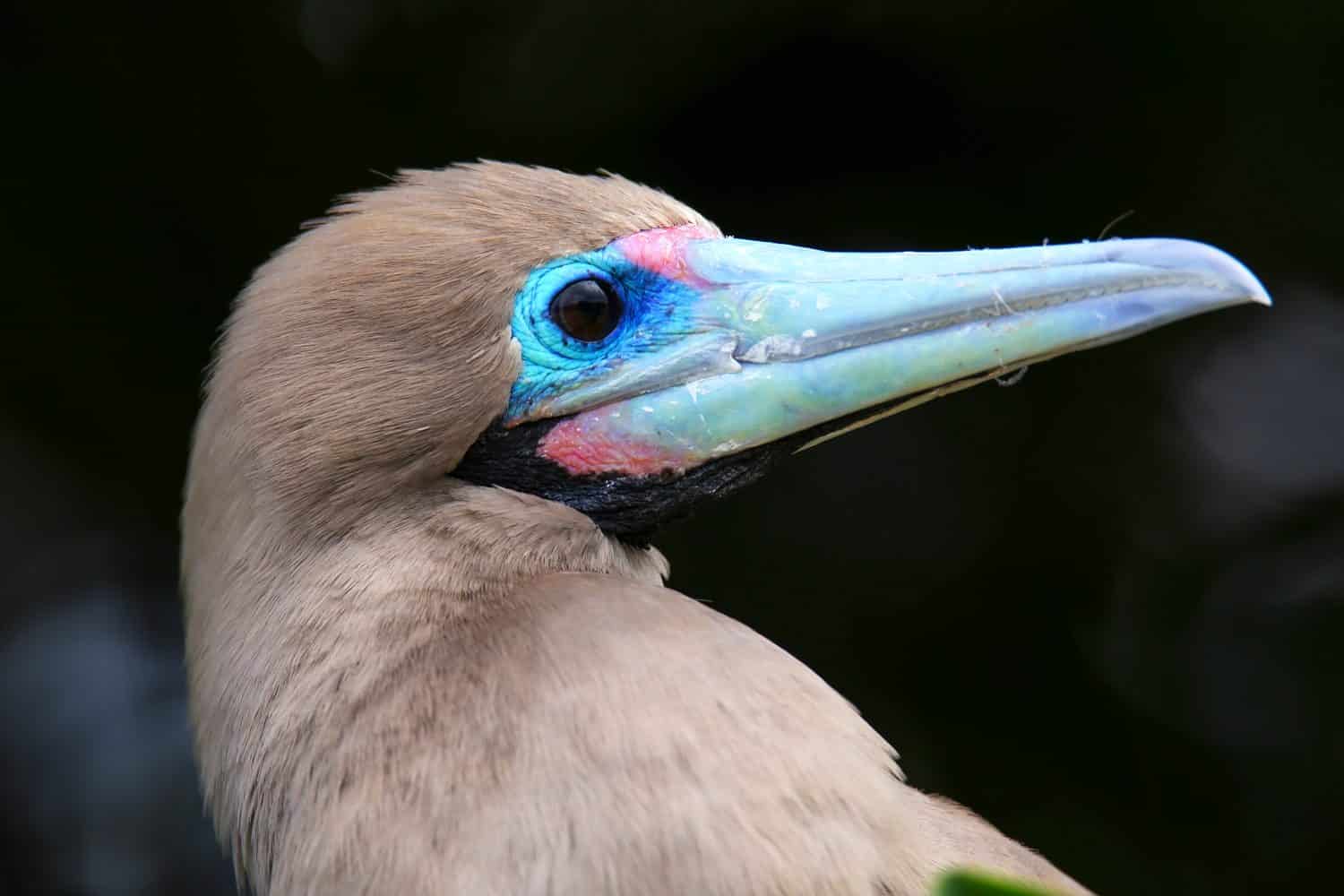
Red-footed boobies are native to tropical oceans worldwide.
©Don Mammoser/Shutterstock.com
While the blue-footed booby is well-known for its unusually colored feet, its cousin the red-footed booby is the one with the more colorful beak. This beak brightens up during the breeding season, displaying pearlescent hues of pale blues and greens. It is complimented with patches of bright blue, pink, and black skin in the areas surrounding the base.
13. Rosy-Billed Pochard (Netta peposaca)
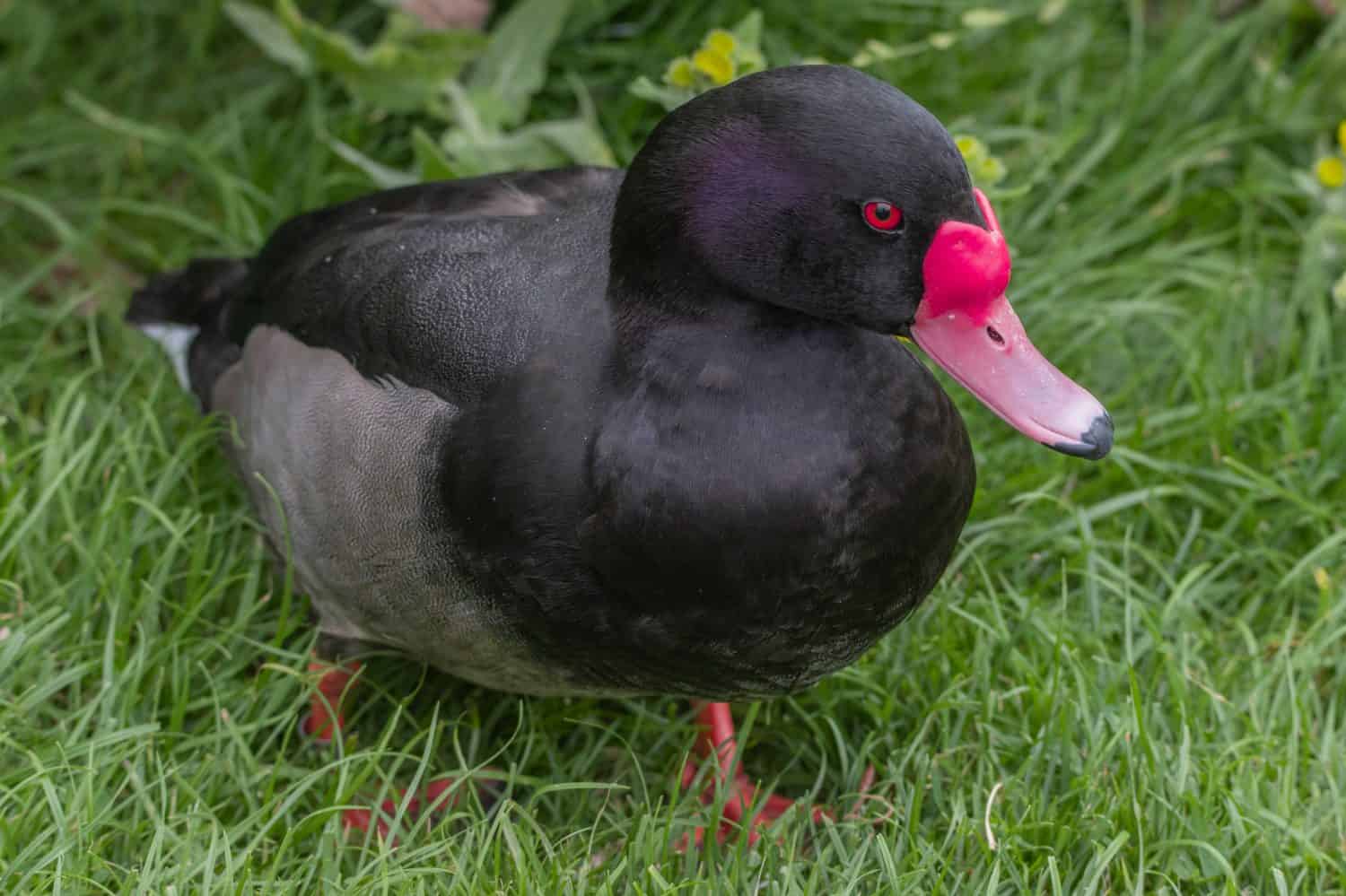
Rosy-billed pochards are native to southern South America.
©Anthony King Nature/Shutterstock.com
The rosy-billed pochard gets its name from the male’s rose-pink beak, accentuated with a crimson knob at the base and a black nail at the tip.
14. Saddle-Billed Stork (Ephippiorhynchus senegalensis)
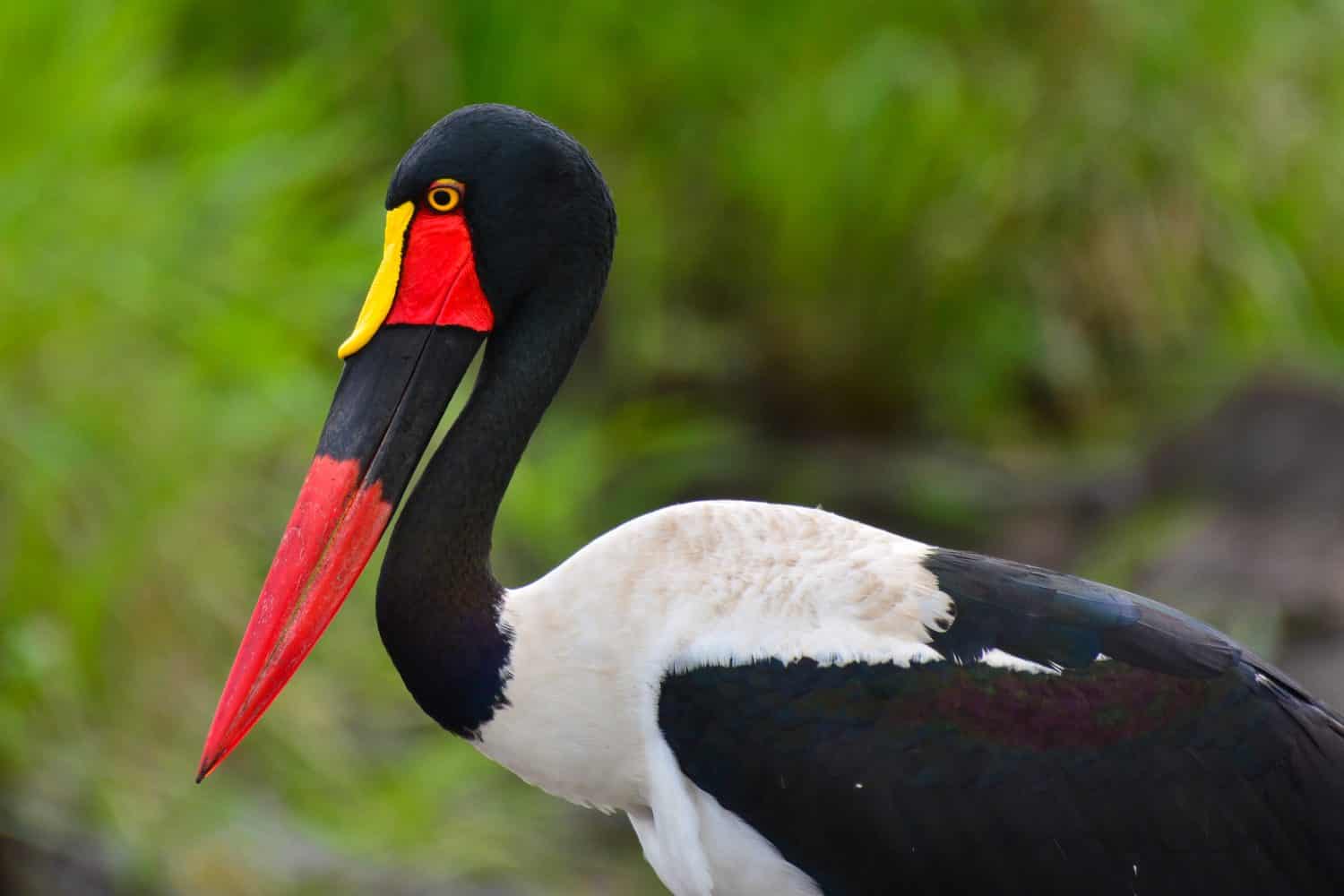
Saddle-billed storks are native to Africa.
©Michael Potter11/Shutterstock.com
The saddle-billed stork gets its name from the yellow “saddle” (a fleshy lappet) that tops off its stunning red and black beak.
15. Silver Teal (Spatula versicolor)
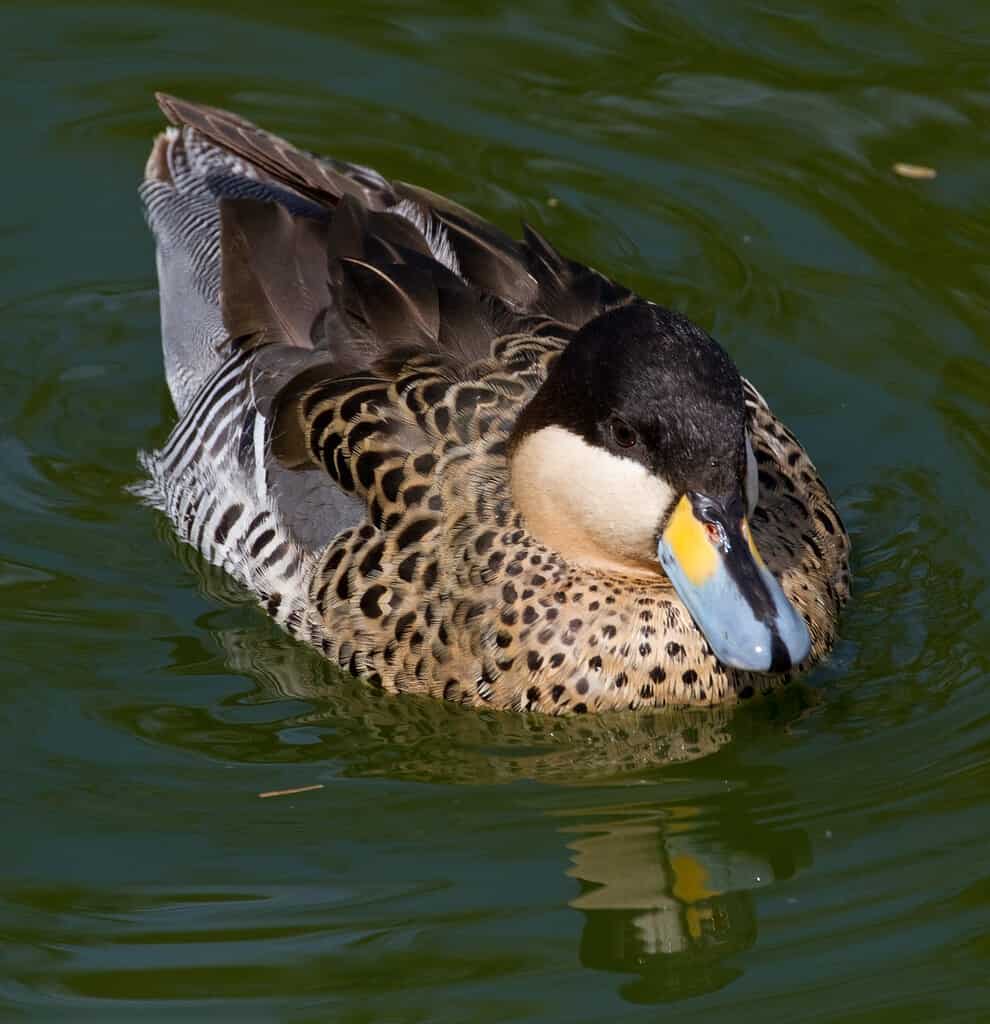
Silver teals are native to southern South America.
©Tony Hisgett from Birmingham, UK / CC BY 2.0 – License
While there are several species of beautiful blue-billed ducks, the male silver teal earns a place on this list with its powder-blue bill accentuated with a black stripe and a patch of bright yellow.
16. Toucans (Ramphastidae)
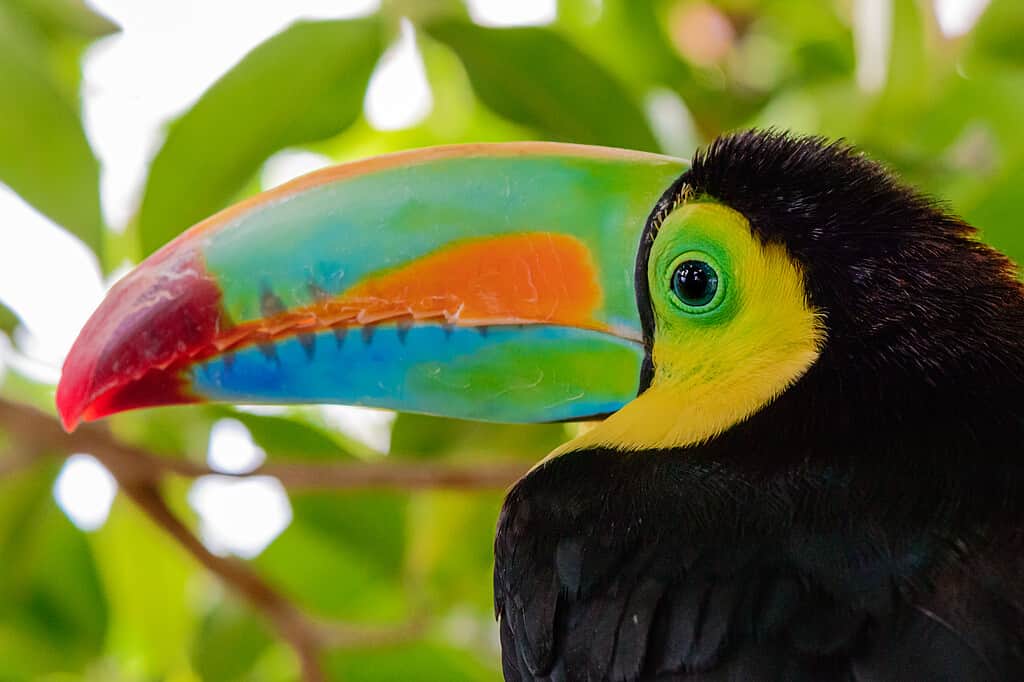
Toucans are native to the Neotropical Americas.
©Frank Cornelissen/iStock via Getty Images
There are 43 species in the toucan family, variously called toucans, toucanets, and aracaris — and they all have super-sized, multicolored beaks! Representing the family here is the keel-billed toucan (Ramphastos sulfuratus), whose beak is exceptionally colorful even by toucan standards.
17. Wood Duck (Aix sponsa)
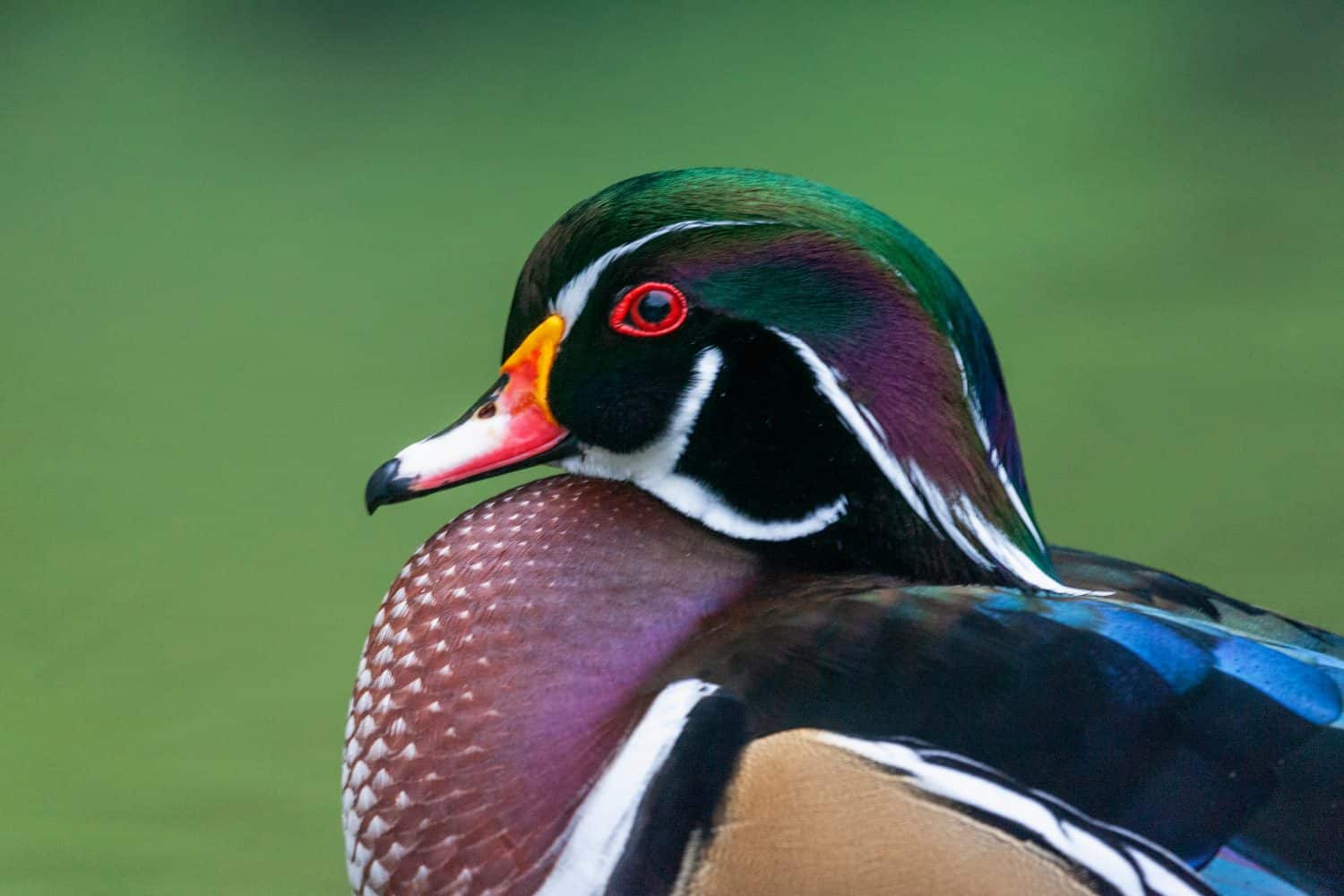
Wood ducks are native to North America.
©Agami Photo Agency/Shutterstock.com
Last but certainly not least, the male wood duck boasts not only some of the most colorful plumage in the duck world but one of the most colorful beaks as well. Its bill is an eye-catching mix of scarlet, yellow, white, and black.
Summary of Discover 17 Birds With Beautiful Multicolor Beaks
| Name | Where Found | Beak Colors |
|---|---|---|
| 1. Bateleur (Terathopius ecaudatus) | Africa & SW Arabia | black, golden yellow, scarlet |
| 2. Black-and-Red Broadbill (Cymbirhynchus macrorhynchos) | SE Asia | turquoise, orange-yellow, green |
| 3. Capped Heron (Pilherodius pileatus) | N South America | blues, purple, gray |
| 4. Eurasian Spoonbill (Platalea leucorodia) | Afro-Eurasia | black & slate zebra pattern, golden yellow |
| 5. Flamingos (Phoenicopteridae) | Americas, Afro-Eurasia | 6 species; colors include shades of pink, purple, yellow, white, black |
| 6. Hornbills (Bucerotidae) | Africa, Asia, Melanesia | 60 species; common colors include red, orange, yellow, cream, white, black |
| 7. King Eider (Somateria spectabilis) | Arctic (breeding); Sub-Arctic (nonbreeding) | scarlet, white or purplish, yellow, black (male) |
| 8. Mute Swan (Cygnus olor) | Eurasia | reddish-orange, dull pink, black |
| 9. Pallas’s Gull (Ichthyaetus ichthyaetus) | Afro-Asia | red, orange, yellow, black |
| 10. Puffins (Fratercula spp.) | N Atlantic, N Pacific | pearlescent pale blues & greens, with patches of bright blue, pink, & black skin around base |
| 11. Purple Gallinule (Porphyrio martinicus) | SE U.S. (breeding); Neotropical Americas (year-round) | yellow, red, powder-blue frontal plate |
| 12. Red-Footed Booby (Sula sula) | tropical oceans worldwide | pearlescent pale blues & greens, with patches of bright blue, pink, & black skin around base |
| 13. Rosy-Billed Pochard (Netta peposaca) | S South America | rose-pink, crimson, black (male) |
| 14. Saddle-Billed Stork (Ephippiorhynchus senegalensis) | Africa | red, black, yellow |
| 15. Silver Teal (Spatula versicolor) | S South America | powder-blue, yellow, black (male) |
| 16. Toucans (Ramphastidae) | Neotropical Americas | 43 species with various colors; keel-billed toucan has rainbow-colored beak |
| 17. Wood Duck (Aix sponsa) | North America | scarlet, yellow, white, black (male) |
The photo featured at the top of this post is © David Havel/Shutterstock.com
Thank you for reading! Have some feedback for us? Contact the AZ Animals editorial team.



